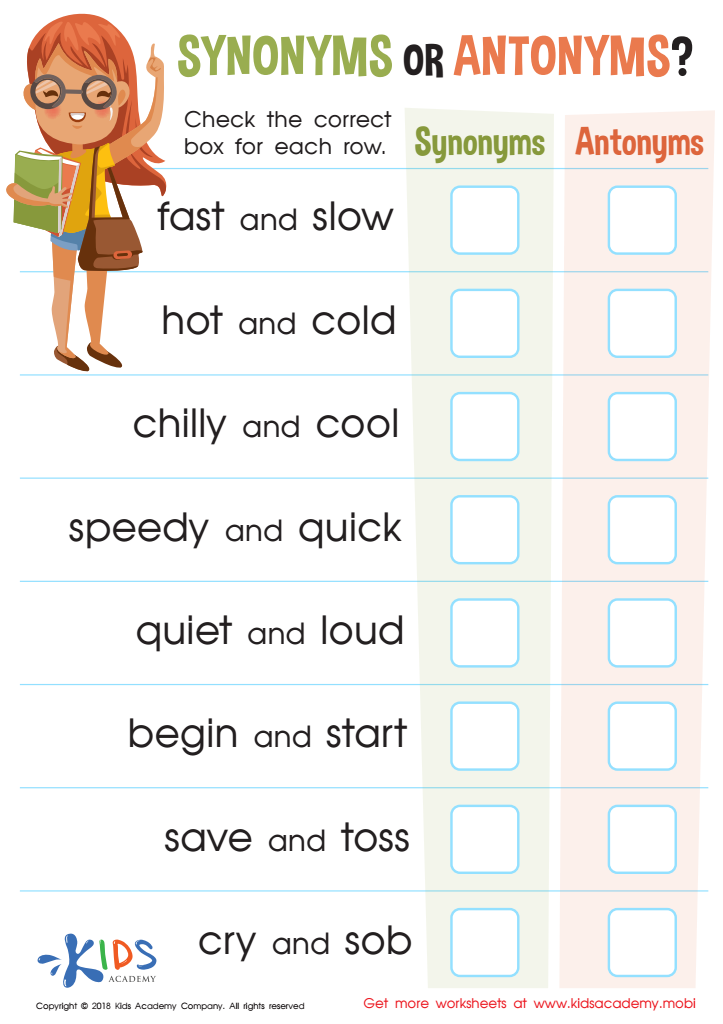Normal Reading worksheets activities for Ages 6-8
7 filtered results
-
From - To
Explore our engaging Normal Reading worksheets designed specifically for children aged 6 to 8! These activities aim to enhance reading comprehension and foster a love of literature in young learners. Each worksheet features age-appropriate texts and questions that challenge students to think critically and analyze what they read. Interactive exercises promote vocabulary development and help improve fluency, making learning both fun and effective. With a variety of themes and reading levels, these worksheets cater to diverse learning abilities and interests. Empower your child’s educational journey with these helpful reading resources that are perfect for home or classroom use!


Synonyms or Antonyms: Assessment Worksheet


Questions About Informational Texts: Assessment 1 Worksheet


Craft and Structure: Assessment 2 Worksheet


Spinosaurus Assessment Worksheet


Sounding it Out: Assessment Worksheet


Assessment: First Thanksgiving Worksheet


Think About It: Assessment Worksheet
Parents and teachers should prioritize normal reading activities for children aged 6-8 because these formative years are crucial for literacy development and cognitive growth. During this age range, children are transitioning from learning to read to reading to learn. Engaging in regular reading activities cultivates strong foundational skills, including vocabulary enrichment, comprehension, and fluency.
Moreover, reading helps to spark imagination and fosters curiosity, enabling children to make connections between different concepts. This not only enhances their academic skills but also nurtures critical thinking and empathy by exposing them to diverse perspectives. Consistent reading practices create a love for literature that can empower children to explore new ideas and cultures.
Furthermore, reading together encourages bonding time between parents and children or teachers and students, which can have profound effects on a child's emotional well-being. By actively participating in reading activities, adults can model positive attitudes towards literacy, offering encouragement and support that develops confidence.
Ultimately, supporting normal reading activities lays the groundwork for lifelong learning and success. Investing time in reading at this early stage helps children build essential skills and fosters academic achievement throughout their educational journey.
 Assign to My Students
Assign to My Students















